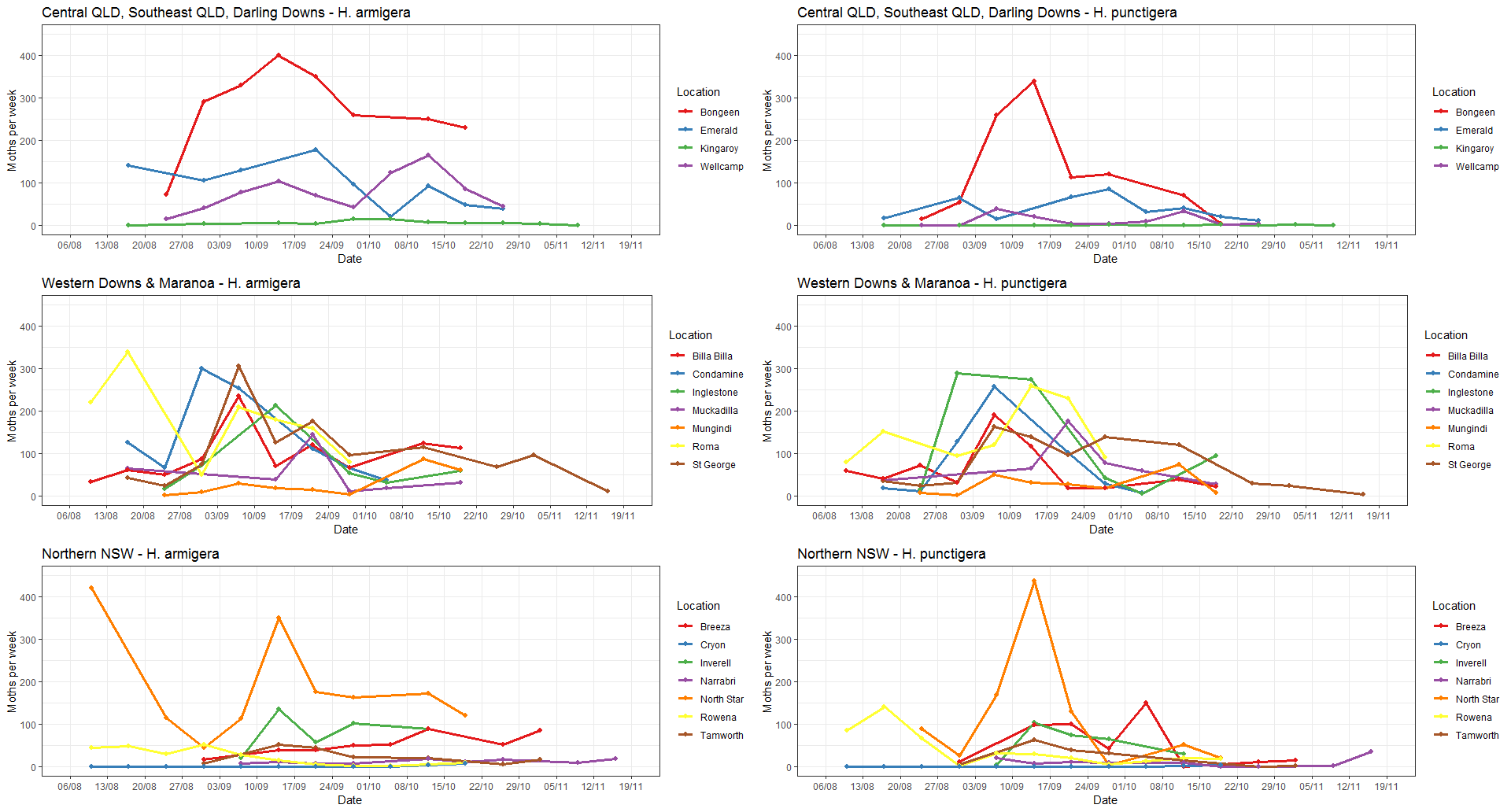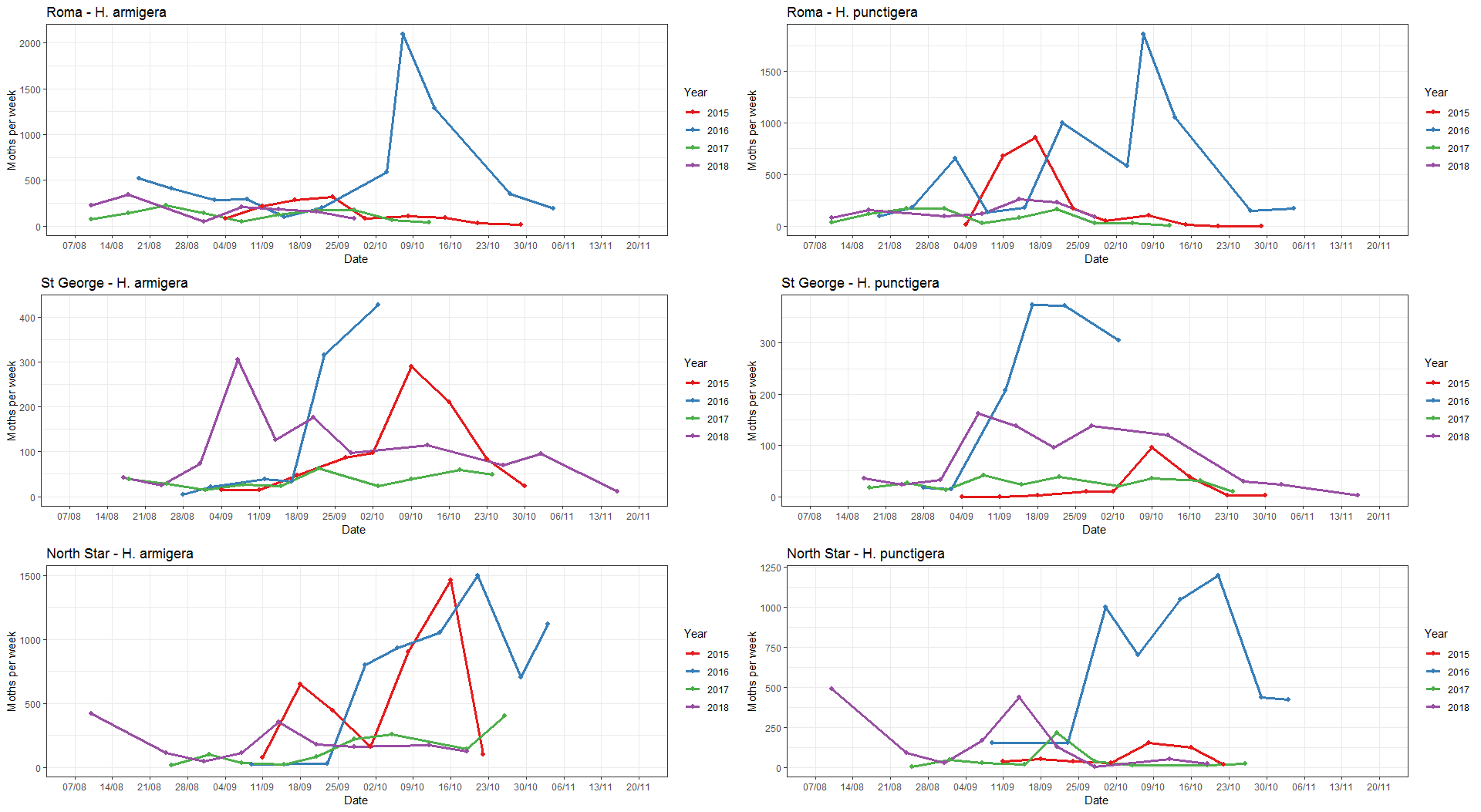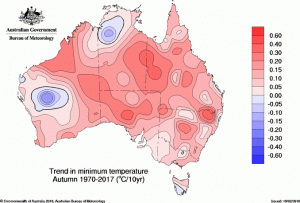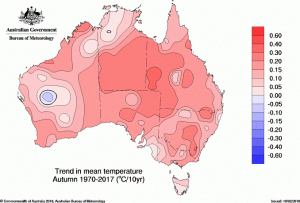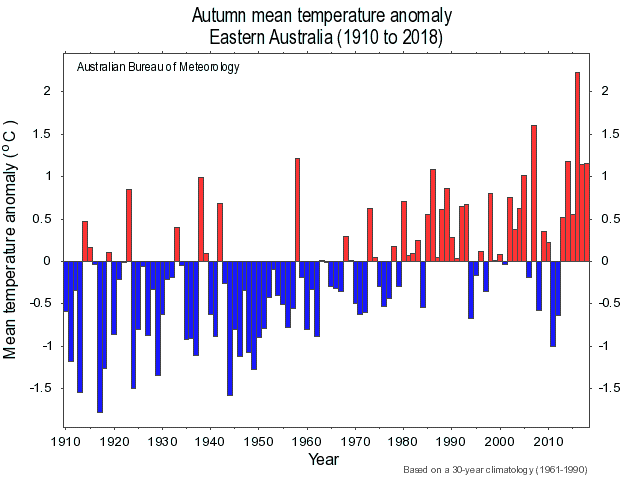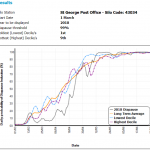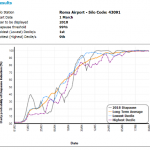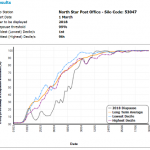The 2018 spring Helicoverpa pheromone trapping program for the Northern Grains Region has recently concluded. The program, run by the Queensland Department of Agriculture and Fisheries for the Northern Grain Growing region, forms part of the national Helicoverpa monitoring network jointly run by DAF, cesar, SARDI, and DAFWA. The primary purpose of the trapping network is to detect high moth activity, for both H. punctigera and H. armigera, serving as a warning for potential egg lays and future larval populations within crops.
This season very few chickpea crops were planted in the Northern Region due to lack of planting rain. However, large numbers of H. armigera and H. punctigera were still detected in pheromone traps, particularly during early-to mid-September in Western Queensland (Figure 1). This high pressure ultimately resulted in reports of H. armigera present in winter cereal crops as previously seen in 2016 (see Twitter post and Beatsheet article).
Figure 1: Weekly Helicoverpa pheromone trap catches in the Northern Region during the 2018 spring cropping season. (counts are calculated as: (total no. moths caught/ trap nights) x 7).
The pheromone trapping program has now been running for four years, and data consistently shows H. armigera populations are present in cropping areas from mid-August onwards (Figure 2), challenging the ‘conventional wisdom’ that H. armigera isn’t present until later in the season.
Figure 2: Four years of data at Roma, St George, and North Star sites. (Note that values on the y-axes differ between graphs).
One explanation for the early spring population is that H. armigera populations may be spending the winter as slow-developing larvae. Recent autumns and winters have exhibited increased temperatures (Figures 3 and 4), which may be causing lower levels of diapause, ultimately resulting in H. armigera populations present in crops during late winter.
Figure 3: Trends in mean and minimum autumn temperatures compared to long-term averages.
Figure 4: Mean autumn temperature anomaly for Eastern Australia since 1910.
Figure 5 demonstrates that the probability of diapause induction this year was lower than the long term average.
- North Star
- Roma
- St George
Figure 5: CottAssist-generated graphs displaying the probability of diapause induction in 2018 (black line) in comparison to long term averages (yellow line).
Unless 2019 turns cold, it is likely that H. armigera will also be present in chickpea crops at podding next spring, and any early spray decisions should take potential resistance issues into account.
Acknowledgements
The diapause induction model can be accessed at CottAssist.
Climate data was provided by the Australian Bureau of Meteorology.
This trapping program wouldn’t be possible without the work of our trap operators:
- Gail Spargo (DAF) – Emerald
- Scott Loughnan (Avenel) – Muckadilla
- Craig Miller (Landmark) – Roma
- Jess Mickelborough & Riley Wilkes (MCA Goondiwindi Pty Ltd) – Condamine & Inglestone
- Emma Teese (DAF) – Kingaroy
- Ed Briton (MCA Goondiwindi Pty Ltd) – Bongeen
- Jamie Street (Street Agricultural Services Pty Ltd) – St. George
- Murray Alywin, Angus Elder, & Bec McMillan (MCA Goondiwindi Pty Ltd) – Bill Billa
- Jeremy Dawson (MCA Goondiwindi Pty Ltd) – Mungindi
- Leigh Norton (Elders) – North Star
- Abbey Johnson & Mary Whitehouse (CSIRO) – Narrabri
- Peter Meppem & Greg Rummery (Greg Rummery Consulting) – Rowena & Cryon
- Glen Uebergang (Local Land Services (LLS)) – Inverell
- Bill Manning (LLS) – Breeza
- Zorica Duric (NSW DPI) – Tamworth
The trapping network gratefully acknowledges the support of the Grains Research and Development Corporation.
For more information, or if you would be interested in being involved in next year’s trapping program, please contact Trevor Volp.

